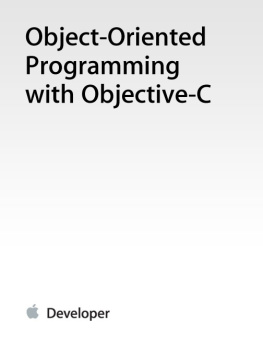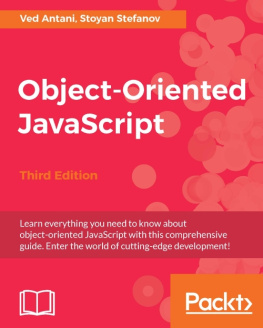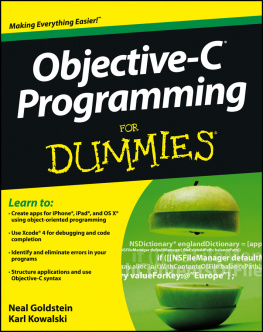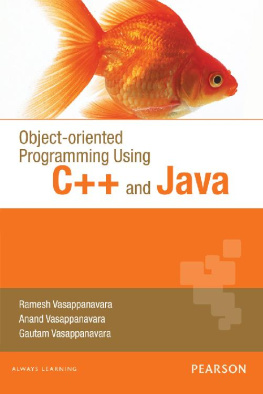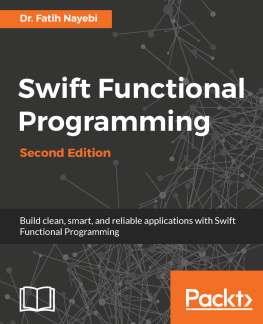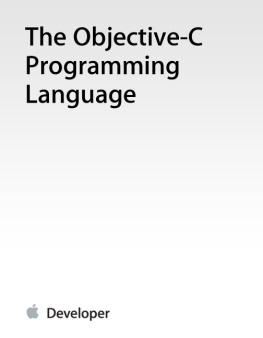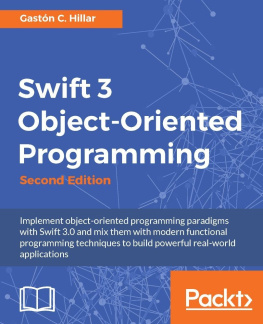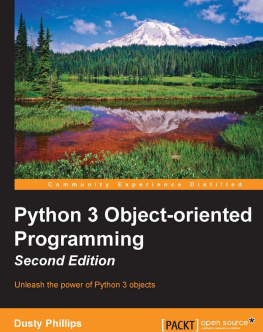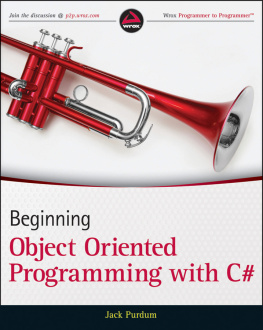coll. - Object-Oriented Programming with Objective-C
Here you can read online coll. - Object-Oriented Programming with Objective-C full text of the book (entire story) in english for free. Download pdf and epub, get meaning, cover and reviews about this ebook. year: 2010, publisher: Apple, genre: Computer. Description of the work, (preface) as well as reviews are available. Best literature library LitArk.com created for fans of good reading and offers a wide selection of genres:
Romance novel
Science fiction
Adventure
Detective
Science
History
Home and family
Prose
Art
Politics
Computer
Non-fiction
Religion
Business
Children
Humor
Choose a favorite category and find really read worthwhile books. Enjoy immersion in the world of imagination, feel the emotions of the characters or learn something new for yourself, make an fascinating discovery.
Object-Oriented Programming with Objective-C: summary, description and annotation
We offer to read an annotation, description, summary or preface (depends on what the author of the book "Object-Oriented Programming with Objective-C" wrote himself). If you haven't found the necessary information about the book — write in the comments, we will try to find it.
Object-Oriented Programming with Objective-C — read online for free the complete book (whole text) full work
Below is the text of the book, divided by pages. System saving the place of the last page read, allows you to conveniently read the book "Object-Oriented Programming with Objective-C" online for free, without having to search again every time where you left off. Put a bookmark, and you can go to the page where you finished reading at any time.
Font size:
Interval:
Bookmark:
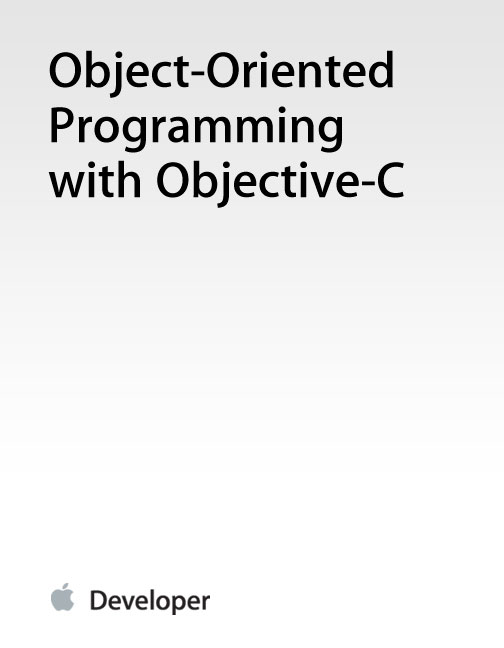
An object-oriented approach to application development makes programs more intuitive to design, faster to develop, more amenable to modification, and easier to understand. Most object-oriented development environments consist of at least three parts:
A library of objects
A set of development tools
An object-oriented programming language and support library
The Objective-C language is a programming language designed to enable sophisticated object-oriented programming. Objective-C is defined as a small but powerful set of extensions to the standard ANSI C language. Its additions to C are mostly based on Smalltalk, one of the first object-oriented programming languages. Objective-C is designed to give C full object-oriented programming capabilities and to do so in a simple and straightforward way.
Important: This document does not describe the Objective-C language itself. To learn about the language, see The Objective-C Programming Language .
Every object-oriented programming language and environment has a different perspective on what object-oriented means, how objects behave, and how programs might be structured. This document offers the Objective-C perspective.
For those who have never used object-oriented programming to create applications, this document is designed to help you become familiar with object-oriented development. It spells out some of the implications of object-oriented design and gives you a flavor of what writing an object-oriented program is really like.
If you have developed applications using an object-oriented environment, this document will help you understand the fundamental concepts that are essential to understanding how to use Objective-C effectively and how to structure a program that uses Objective-C.
Because this isnt a document about C, it assumes some prior acquaintance with that language. However, it doesnt have to be an extensive acquaintance. Object-oriented programming in Objective-C is sufficiently different from procedural programming in ANSI C that you wont be hampered if youre not an experienced C programmer.
This document is divided into several chapters:
explains why Objective-C was chosen as the development language for the Cocoa frameworks.
discusses the rationale for object-oriented programming languages and introduces much of the terminology. It develops the ideas behind object-oriented programming techniques. Even if youre already familiar with object-oriented programming, you are encouraged to read this chapter to gain a sense of the Objective-C perspective on object orientation and its use of terminology.
describes how you can think of a program in terms of units that combine state and behaviorobjects. It then explains how you characterize these objects as belonging to a particular class, how one class can inherit state and behavior from another class, and how objects can send messages to other objects.
explains how you think about designing an object-oriented program by creating connections between objects. It introduces the techniques of aggregation and decomposition, which divide responsibility between different sorts of object, and the role of frameworks in defining libraries of objects designed to work together.
discusses issues of project management related to collaboration among programmers and to code implementation.
The Objective-C Programming Language describes the Objective-C programming language.
Objective-C Runtime Programming Guide describes how you can interact with the Objective-C runtime.
Objective-C Runtime Reference describes the data structures and functions of the Objective-C runtime support library. Your programs can use these interfaces to interact with the Objective-C runtime system. For example, you can add classes or methods, or obtain a list of all class definitions for loaded classes.
The Objective-C language was chosen for a variety of reasons. First and foremost, its an object-oriented language. The kind of functionality thats packaged in the Cocoa frameworks can only be delivered through object-oriented techniques. Second, because Objective-C is an extension of standard ANSI C, existing C programs can be adapted to use the software frameworks without losing any of the work that went into their original development. Because Objective-C incorporates C, you get all the benefits of C when working within Objective-C. You can choose when to do something in an object-oriented way (define a new class, for example) and when to stick to procedural programming techniques (define a structure and some functions instead of a class).
Moreover, Objective-C is a fundamentally simple language. Its syntax is small, unambiguous, and easy to learn. Object-oriented programming, with its self-conscious terminology and emphasis on abstract design, often presents a steep learning curve to new recruits. A well-organized language like Objective-C can make becoming a proficient object-oriented programmer that much less difficult.
Font size:
Interval:
Bookmark:
Similar books «Object-Oriented Programming with Objective-C»
Look at similar books to Object-Oriented Programming with Objective-C. We have selected literature similar in name and meaning in the hope of providing readers with more options to find new, interesting, not yet read works.
Discussion, reviews of the book Object-Oriented Programming with Objective-C and just readers' own opinions. Leave your comments, write what you think about the work, its meaning or the main characters. Specify what exactly you liked and what you didn't like, and why you think so.

